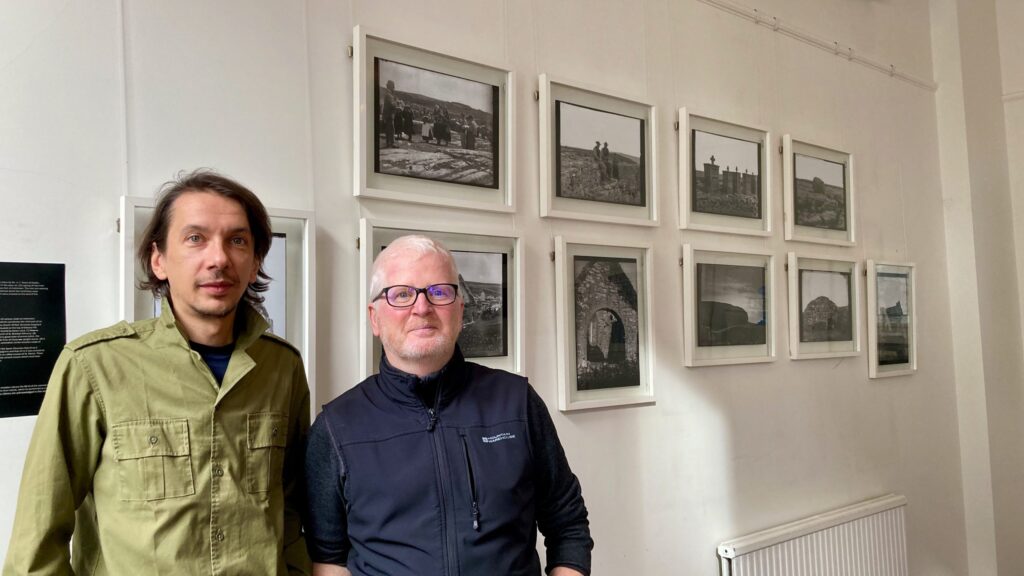Page updated 17 September 2025
Alfred Cort Haddon, A Very English Savage is the first in depth study of Haddon’s contribution to modern anthropology since Alison Hingston Quiggin published her underrated memorial ‘sketch’ in 1942, which she titled Haddon The Head Hunter. I reinterpret her title in line with Haddon’s provocative adoption of the persona of an English savage – a head hunter – in slideshows he performed with the intention of humanising the victims of colonialism and combatting Eurocentric racism.
Unlike Quiggin, I had access to ‘lost’ material from the Aran Islands and I use this to re-evaluate Haddon’s work as an ethnologist in Ireland. I represent this formative phase as an experiment in radically socialising anthropology. I challenge disciplinary historians and post-colonial scholars who treated Haddon’s ‘Irish’ ethnology as the Imperial and racist other of the social anthropology, cultural nationalism and literary modernism that emerged in the first two decades of the 20th Century.
Stocking, Kuklick and their followers constructed a new history of anthropology in the 1980s and 90s. They started with with the premise that Haddon was the very model of a Darwinian evolutionist and, as such, a useful whipping boy for an imperial anthropology that rattled like a skeleton in the cupboard of post-colonial anthropology. It was a good story and well-fitted to Thomas Kuhn’s influential theory of scientific revolutions, but they were wrong. As scholarship accumulated on top of their foundations, Haddon and his work in Ireland was either ignored or misrepresented as an exercise in colonial science.
A Very English Savage dispenses with most of what has been written about Haddon’s involvement in Anglo-Irish anthropology in the 1890s. In its place I present evidence gathered in a painstaking reconstruction of a lost archive of papers, sketchbooks, slideshows and institutional records. The result is, to borrow a phrase from Kuklick, a new history of anthropology, but one that is very different to hers in its treatment of Haddon.. In my version, Haddon – the grandson of anti-slavery activists whose aunts were socialists and feminists – sets out to revolutionise anthropology in association with a network of anarcho-utopian activists and philosophers.
At the heart of this book is a story about the relation of power to knowledge production in universities as ‘scientific’ anthropology – the skull-measuring business influenced hugely by Francis Galton – became a sub-discipline of anatomy. Ethnology, its radical other grounded in the humanities, was marginalised in a culture war that it is being replayed in the current stand-off between a humanitarian tradition of engaged anthropology and a discipline of political utility in a neoliberal academy that had shifted to the right long before Trump appeared on the scene. Haddon still matters because he embodies resistance to the instrumental use of anthropology and political control of the knowledge production industry.

Anon, 1885, Dredging Party (Permission of the Royal Irish Academy). Haddon poses as an outsider during a dredging expedition organised by the Royal Irish Academy. The Rev Samuael Haughton sits between Haddon and his nemesis, the Rev William Spotswood Green.
A Very English Savage is also a book about photography, both as an artform and a source of meaning. The book pivots on Haddon’s discovery of social documentary photography in the Aran Islands in 1890, thanks to Andrew Francis Dixon and his ‘instantaneous’ camera. Haddon used Dixon’s photographs in slideshows that he deployed as a form of anti-colonial activism at the height of the Home Rule crisis. His activism provided an ethnographic baseline for cultural nationalists like Hyde and literary modernists like Synge.
Haddon continued the experiment when he returned to the Torres Strait in 1898. Inspired by an early reading of Kropotkin, Haddon set out to capture and represent the full affect of a Papuan dance danced for the last time. He experimented with John Joly’s system of single-shot colour photography in combination with a Newman Guardia Kinematograph for movement and a phonograph for sound. Given his radically anti-colonial attitude and subversive intent, the four minutes of film he managed to make stand as a singularly modernist achievement in anthropology.
Academic publishing severely limits the scope for photography as an alternative to text, so I represented this aspect of Haddon’s work – a preference for ‘instantaneous’ photography over ‘tedious’ text – in an exhibition of twenty five photographs at the Royal Anthropological Institute (RAI) in London in November 2022. Andrew Francis Dixon took most of the photographs in Haddon’s company in the Aran Islands in 1890. He left the negatives on a shelf in a technical area under the ‘Old’ Anatomy Theatre in TCD in 1890, where I discovered them in 2014. I conserved them in 2019 by digitising the collection. Andrei Nacu, curator at the RAI, produced new prints from the scans of Dixon’s negatives.

Andrei Nacu and Ciarán Walsh, curators of the ‘Haddon and the Aran Islands’ exhibition at the Royal Anthropological Institute in London. Photo Hanine Habib.
I suspected that Dixon would have kept the prints in an album, but it was not among his papers in TCD. I carried out an extensive search of online catalogues before A Very English Savage went to print in 2022. I found some images in a family album in the National Libraryof Ireland, but there was no sign of an Aran album that matched the negatives. Unbeknownst to me Dixon’s grandnephew Adrian Dixon had donated the “missing” album to Special Collections in University College Cork a couple of years before and it went online in 2023. That has become the springboard for further research into Dixon, Haddon, Joly and Synge.

